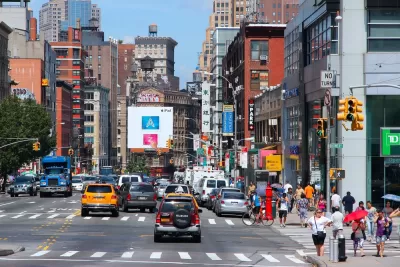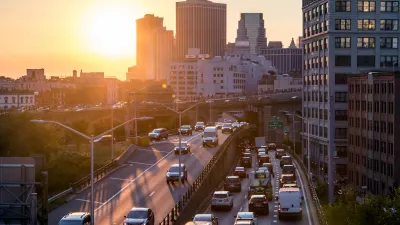The goal of transportation networks should be to provide integrated and efficient services, which requires looking beyond particular modes.

Stephen Goldsmith makes the case that cities need to understand transportation as an integrated mobility market rather than manage each individual mode. "For decades, unfortunately, cities also have embraced another goal: to protect incumbent transit providers even at the expense of underserved communities."
New York City’s recent decision to become the first American city to implement congestion pricing is an opportunity to buck the trend, says Goldsmith. "Unlike the caps and other restrictions that that have limited mobility solutions in the past (and, unfortunately, continue to evolve), Manhattan's congestion pricing would likely be enacted across all forms of private vehicles, nudging the market instead of protecting competitors, while devoting the new revenues to subways and other public transit needs." He also advocates for dynamic pricing and distance-based fees to maximize the benefits of the congestion pricing system.
Goldsmith adds he would also like to see less regulation of private bus companies because they help fill in the gaps where public transit services fall short. "The solution to congestion is more than just getting cars off the road; it is also about improving the performance of more efficient means of transportation," he notes.
FULL STORY: Bringing Market Forces to the Transportation Equation

Maui's Vacation Rental Debate Turns Ugly
Verbal attacks, misinformation campaigns and fistfights plague a high-stakes debate to convert thousands of vacation rentals into long-term housing.

Planetizen Federal Action Tracker
A weekly monitor of how Trump’s orders and actions are impacting planners and planning in America.

In Urban Planning, AI Prompting Could be the New Design Thinking
Creativity has long been key to great urban design. What if we see AI as our new creative partner?

Portland Raises Parking Fees to Pay for Street Maintenance
The city is struggling to bridge a massive budget gap at the Bureau of Transportation, which largely depleted its reserves during the Civd-19 pandemic.

Spokane Mayor Introduces Housing Reforms Package
Mayor Lisa Brown’s proposals include deferring or waiving some development fees to encourage more affordable housing development.

Houston Mayor Kills Another Bike Lane
The mayor rejected a proposed bike lane in the Montrose district in keeping with his pledge to maintain car lanes.
Urban Design for Planners 1: Software Tools
This six-course series explores essential urban design concepts using open source software and equips planners with the tools they need to participate fully in the urban design process.
Planning for Universal Design
Learn the tools for implementing Universal Design in planning regulations.
Gallatin County Department of Planning & Community Development
Heyer Gruel & Associates PA
JM Goldson LLC
City of Camden Redevelopment Agency
City of Astoria
Transportation Research & Education Center (TREC) at Portland State University
Jefferson Parish Government
Camden Redevelopment Agency
City of Claremont





























